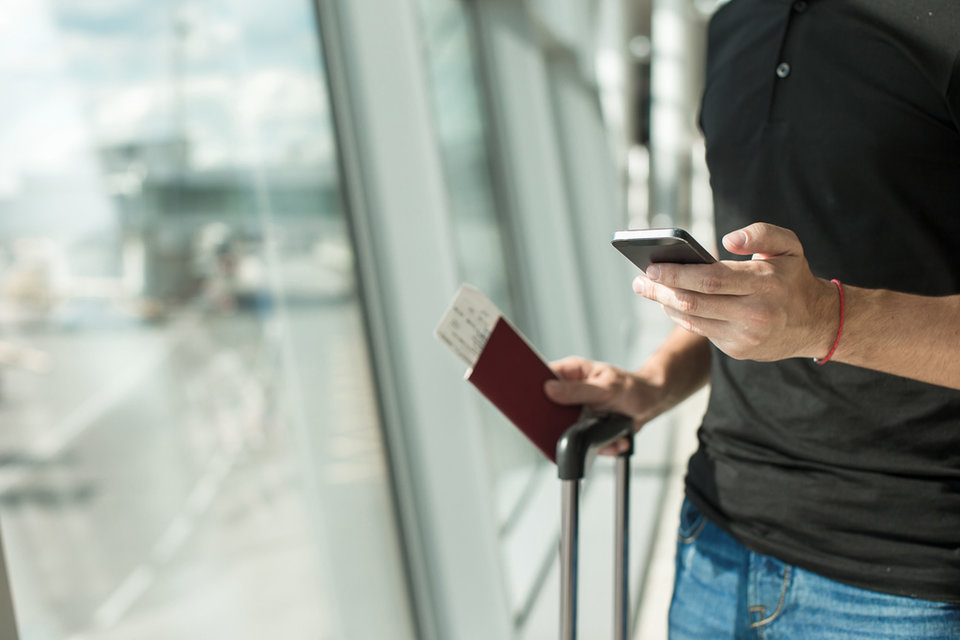Technology
Touchless travel: Amadeus on the future of airport biometrics
As airports respond to new safety requirements for travel, many are turning to touchless technology to minimise the risk of Covid-19 transmission. Frankie Youd hears from Amadeus about biometric solutions available to airports.
With the airport industry slowly beginning to take to the skies once more, the significance of passenger safety is more important than ever due to the ongoing complications brought about by the Covid-19 pandemic.
Many airports are turning to contactless payment options, online booking, and virtual boarding passes to reduce the need for passengers to come into contact with staff and surfaces, and some airports have taken this a step further with the inclusion of biometric technology.
Providing a completely contactless experience for passengers, the use of biometrics within airports allows passengers to feel confident while travelling while providing airlines with a time-efficient means of checking in passengers.
Stephan Hirmer, head of passenger processing services at Amadeus, explains how the technology is included within airports and highlights the many benefits that it brings.

Stephan Hirmer, head of passenger processing services at Amadeus
Frankie Youd: In which areas of the airport environment are biometrics being integrated?
Stephan Hirmer: In an airport, the usual passenger process is that you make your way to the airport, when you arrive you need to check into the airport through a kiosk or with an agent. You then drop your bags if you have any, then you proceed to the security, then behind security in the air side area of the airport there’s usually some food and beverage, some shopping, some lounges. Then you board the plane and reach your destination on the other side.
Each of these passenger processing steps can be biometrically enabled. Amadeus provides systems to enable each of those process steps.
Biometrics is a relatively new technology, people are getting used to it, passengers are getting used to it. We see a lot of airports wanting to dip their toe in the water and to test biometrics in a smaller setting.
So, they would enable only certain process points in an airport biometrically such as just boarding or just a pre-security check to gain confidence to see how it is working for their passengers, how it’s working in their setting, and does it deliver the benefits they would like to see it deliver.
Then from there if it’s successful they tend to expand it into additional process steps and they expand the target group of passengers. Sometimes it’s only VIP in the beginning and then it gets expanded to the whole audience of passengers, or sometimes it’s just one airline and then it gets expanded into to all airlines.
Amadeus realises that no two airports are the same, we build our solution to fit and to be flexible enough to correspond to the needs of each individual airport.
How is the technology installed and presented to the passenger?
We are big advocates and big believers in cloud computing, our biometric product is cloud hosted, is centrally hosted. What we need to deploy in the airport is very minimal, essentially it’s just cameras called ‘biopods’ or biometric cameras, which are deployed in the airport. The airport needs to have internet connectivity and from there the cameras connect up to our data centre up to our cloud, and the biometric processing happens in the cloud.
It’s straightforward, we can do these implementations rather quickly. It’s just a question of shipping the cameras, installing them, cabling them up, connecting them to our cloud hosted servers, and then you’re ready to go as an airport.
It really takes away the complexity. We don’t need to install servers locally, we don’t need to do complicated things locally, all the complexity is abstracted from the airport we take care of that complexity, it’s a very quick and easy deployment.
What are the key benefits of using biometrics for the airports and passengers?
What we all know about the pandemic situation is that some people are afraid of touching things because passengers and the public are afraid of being infected, and rightfully so. One of the benefits for the passengers is that biometrics reduce that need to touch things and it reduces the contact between people, because instead of interacting with another person you’re standing in front of a camera.
It’s a much more automated passenger experience, you walk up to the device, it processes you very quickly, it recognises you very quickly and then you’re allowed through. It removes the need for manual checks.
We did a couple of trials and tests and what we see that there’s a huge decrease in terms of time it takes to process a passenger. What we see is that it’s around or below two seconds. For example, for boarding if you compare that with a non-biometric boarding process it takes much longer than just two seconds because of all the checks.
For the airports, it means if a flight can be boarded quicker it means it spends less time at the gate, which for the airport means they can have another aeroplane at that same gate a little bit later. It increases the overall capacity for the airport and the turnaround time for the airlines.
If you think of the airline, the airline business, the airlines are making money when the planes are in the air, for them it’s best to have their aeroplanes in the air as much as possible because that’s when they can generate revenue. Biometric processing helps them to do so because it reduces the time on the ground waiting for passengers to board and for passengers to be processed.

Credit:
How does the company ensure passenger confidence and security when using biometric technology?
As a global company, we work with customers around the world. Privacy and data security regulations are different across the world and we work very closely with our customers, the airports, and the airlines to help them understand privacy requirements. We have developed our solutions so that our customers can meet their security, privacy and compliance needs.
On the passenger side, it’s important for them to feel safe and secure, they need to have a good experience. We go a long way to make sure the passenger fully understands the system they are using through signage and messages. We do test them a lot with real life passengers, when we deploy in a new airport, we always have a test phase to make sure that the system is not only working well, but also that everyone’s comfortable using that system.
The airport or the airline staff who need to use the system, who need to start up the system and have it working at the gate need to be comfortable. They need to know what’s going on so they can then explain to the passengers, and the other way around that the passengers are very comfortable and feeling safe and secure, using our system.
Testing is paramount to provide the best possible user experience, not only in terms of safety and security but also in terms of adoption to the passenger.
Do you think this technology could be a staple of airports in the future?
I think biometrics will become more commonplace, more common for passengers. We all see that in our daily lives, almost all mobile phones today are biometrically enabled. If you have an iPhone, you can unlock it with your face ID or with your fingerprint, that’s essentially biometrics.
On the airport side with the need to increase passenger processing times on one side and then the continued need to avoid touching things in the airport, I think biometrics is here to stay. It’s a technology that will become more and more widespread.
It’s also something that will likely move at different speeds in different parts of the world. Some parts of the world are likely to be a bit quicker to further their biometrics, others are perhaps a bit slower.
Main image: Amadeus believes that each step of passenger processing at airports can be biometrically enabled. All images credit: Amadeus